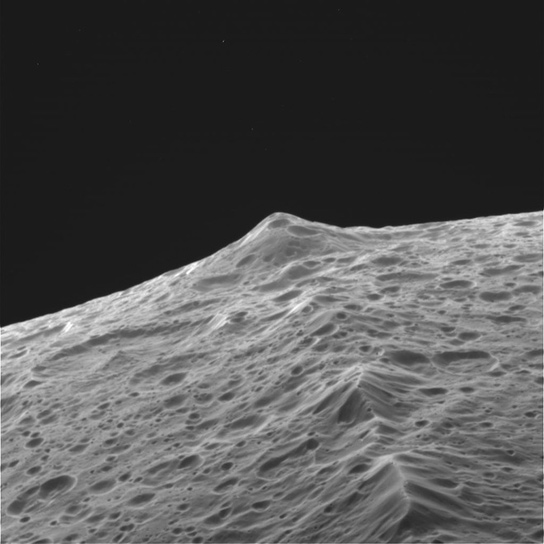The findings were presented at the American Geophysical Union conference on December 4. Scientists suggest that a giant impact in Iapetus’ early history were the cause of the strange planetary formations. This slowed its rotation rate and deformed its crust. 1 million years later, the poles had flattened and a ridge extended most of the way around its middle. The hypothesis was suggested by Gabriel Tobie, from the University of Nantes, France. Previous theories include tectonic activity within the moon itself, or the presence of an impact-produced satellite. Tobie and his colleagues simulated the Iapetian early years and discovered that it spun itself about once every six hours. After 10 million years of unperturbed rotation, an object between 500 and 650 miles wide impacted on Iapetus, disrupting the moon’s rotation rate, slowing it down to more than 30 hours per rotation. This rapid braking stretched and deformed the moon’s crust, flattening its poles and pinching the ridge around its middle. A 500-mile-wide crater could be a scar left over from the collision from a single impact. Some critics believe that it’s not as easy as suggested to despin the moon and that the simulation might have gotten the interior composition of Iapetus wrong.
